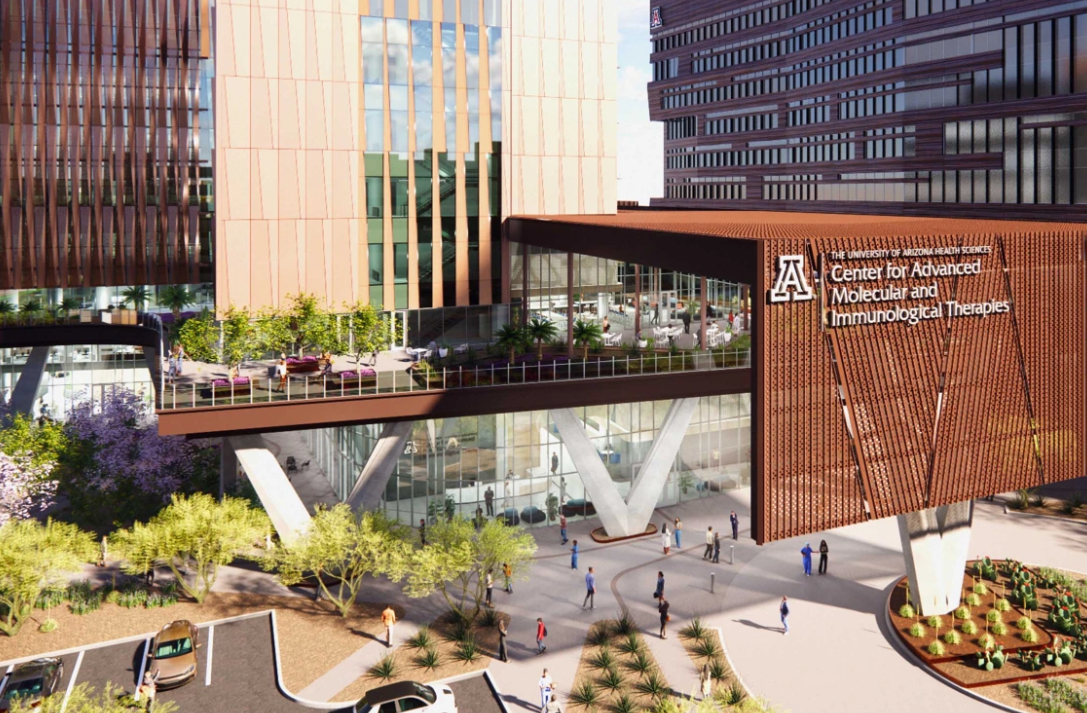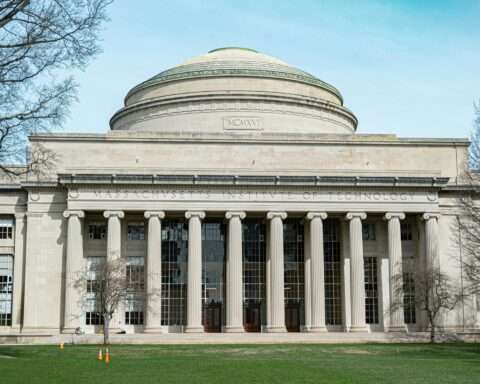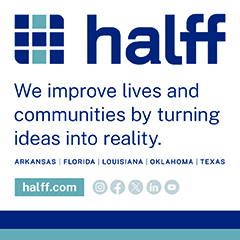Federal funding freezes are halting public universities’ capital projects around the nation, including a $300 million advanced molecular and cancer research facility in downtown Phoenix.
University of Arizona Health Sciences announced construction on the new medical research and innovation facility will pause until new funding is secured, according to a university announcement.
The proposed seven-story building, which broke ground in October, would house the university’s Center for Advanced Molecular and Immunological Therapies (CAMI) and represent the next step in medical innovation for the Phoenix Bioscience Core (PBC).
The PBC operates as a hub for researchers, educators and industry stakeholders to train and develop the next generation of medical practitioners and innovators. PBC provides high school and university students opportunities to collaborate and build experience with industry professionals before entering the medical field.
The facility’s founders, the Translational Genomics Research Institute, the City of Hope and the International Genomics Consortium, are also responsible for more than 30 bioscience companies on the leading edge of advancing precision medicine.
The $300 million CAMI facility is designed to complement PBC’s existing services, expanding cell and gene therapy research, startup activity and corporate engagement. Providing more than 200,000 square feet of laboratory, clinical, administrative and green space, the facility would provide a center for collaborative research on diagnoses, prevention and treatment strategies, infectious diseases and autoimmune conditions.
Despite the federal freeze, the university has garnered support from several local, state and private backers seeking to get CAMI operational. The Maricopa County Board of Supervisors is devoting $4 million to CAMI, the county’s second investment for the project in just as many years.
As the university awaits the future of federal funding, officials will continue to evaluate the financial situation for CAMI. Initially, university officials anticipated the new facility would open doors to students, researchers and companies in 2027.
Beyond the University of Arizona’s freeze on CAMI, potential cuts to the U.S. Department of Education and higher education funding signal a troubling trend for public universities throughout the nation.
In response to federal and state uncertainty, all new capital construction projects at the University of Houston (UH) will be paused—a move that could include the reallocation of funding and closure of existing student services.
University officials note that significant capital improvement initiatives, such as the Centennial Campus Enhancement Project, will be frozen for a period of three months or until the end of May.
While UH projects that are funded privately or currently under construction will proceed, budgetary pressures will force the university to reevaluate new projects and initiatives while seeking to maintain vital student and financial aid services.
Another Texas higher education institution, Baylor University will scale back expansion efforts for the College of Medicine and other research initiatives. Facing an estimated $80 million shortfall in federal National Institutes of Health (NIH) funding, the university is shifting its mindset from growth to maintenance and operations.
Baylor’s significant investment in medical research, education and innovation is highlighted by the university’s tenancy in the Texas Medical Center’s Helix Park initiative in Houston, which catalyzes growth and innovation in the biomedical field. Without anticipated federal funding, Baylor’s involvement in Helix Park and ability to fund researchers will rely on outside sources, including private, state, regional or local sponsors.
Ivy Leaguer and private institution, Duke University is facing a massive shortfall in federal funding for medical research on biomedical engineering, neurosurgery, cancer and expansion.
Cuts to the National Institutes of Health’s (NIH) allotment of “indirect costs” for institutions will force the university to reduce expenses for utilities and laboratory maintenance, which amounts to about 61% of Duke’s funding. The university’s College of Medicine receives over 75% of the total NIH funding distributed to the university.
Duke’s plans to construct new facilities and grow capacity will also be stunted, according to university officials, including the development of a new research building. The university will continue to explore funding options but expects the consolidation of labs and teams and potential of widespread layoffs.
Image Courtesy of McCarthy + SmithGroup (rendering for illustrative purposes only)













